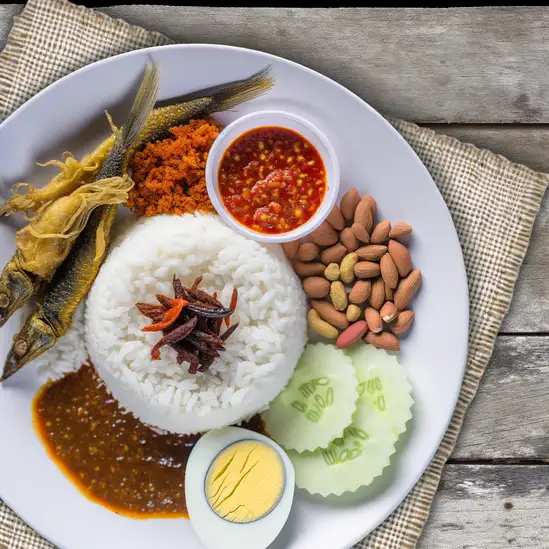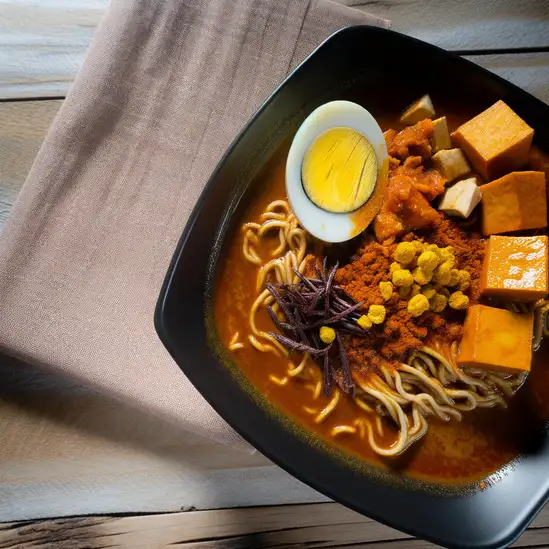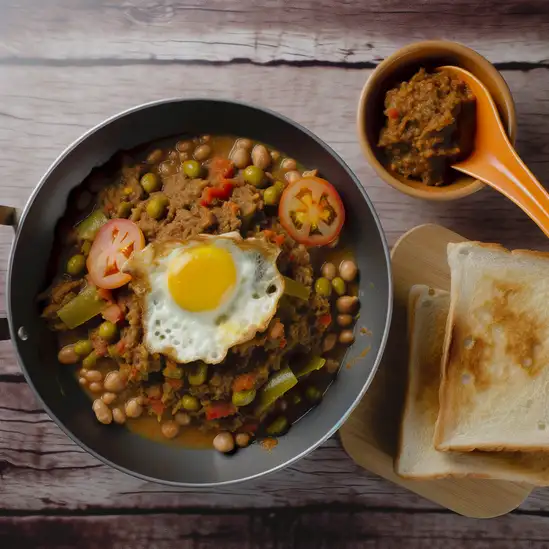


Johor Bahru has this lively,welcoming energy that instantly makes you feel like you’ve stepped into a place where tradition and modern life dance together effortlessly. As you wander through its bustling streets,you’ll catch the rich aroma of spices and grilled satay wafting from street stalls,mingling with the faint scent of tropical flowers from nearby gardens. The city hums with a mix of chatter in Malay,Mandarin,and Tamil,creating a vibrant soundtrack that’s both familiar and excitingly new. What’s really special about Johor Bahru is how it wears its history with pride while embracing the future. You can explore colorful temples and colonial buildings that tell stories of the past,then hop over to sleek malls or quirky cafes where young locals sip kopi and share laughs. The city’s character shines brightest in its food—imagine biting into a crispy roti canai,the flaky layers melting in your mouth,or savoring fresh seafood caught just off the coast,bursting with flavor. There’s a warmth in the people here that’s hard to forget. Whether you’re bargaining at the lively markets or chatting with a friendly vendor,you’ll feel a genuine kindness that makes the city feel like a second home. Johor Bahru isn’t just a stopover; it’s a place that invites you to slow down,soak in the colors,sounds,and tastes,and leave with stories you’ll want to tell again and again.
The information on this page is currently being reviewed by Tripkliq and should be used as a guide only
Eng word: Hello
Eng pronunciation: Ha-lo
Local language: Halo
Eng word: Goodbye
Eng pronunciation: Se-la-mat ting-gal
Local language: Selamat tinggal
Eng word: Thank you
Eng pronunciation: Te-ri-ma ka-sih
Local language: Terima kasih
Eng word: How much
Eng pronunciation: Be-ra-pa
Local language: Berapa
Eng word: Toilet
Eng pronunciation: Tan-das
Local language: Tandas
Eng word: Help me
Eng pronunciation: To-long sa-ya
Local language: Tolong saya
Eng word: Yes
Eng pronunciation: Ya
Local language: Ya
Eng word: No
Eng pronunciation: Ti-dak
Local language: Tidak
Eng word: Excuse me
Eng pronunciation: Ma-af
Local language: Maaf
Johor Bahru was founded in 1855 by Temenggong Daeng Ibrahim, the father of Sultan Abu Bakar, and was originally named Tanjung Puteri.
Sultan Abu Bakar, known as the 'Father of Modern Johor,' played a crucial role in modernizing Johor Bahru in the late 19th century, introducing administrative reforms and infrastructure development.
Built in 1866 by Sultan Abu Bakar, Istana Besar (The Grand Palace) is a significant historical landmark and now houses the Royal Abu Bakar Museum, showcasing the rich heritage of Johor's royal family.
Completed in 1940, the Sultan Ibrahim Building is an iconic structure that served as the state secretariat building and is a fine example of colonial and Malay architectural styles.
Opened in 1923, the Johor-Singapore Causeway is a vital link between Malaysia and Singapore, facilitating trade and travel between the two countries.
Constructed between 1892 and 1900, the Masjid Sultan Abu Bakar is a beautiful mosque that blends Victorian and Moorish architectural styles, and is a prominent religious site in Johor Bahru.
Dating back to the 19th century, the Johor Bahru Old Chinese Temple is one of the oldest religious structures in the city, reflecting the cultural diversity and harmony of its community.
Inaugurated in 1994, Dataran Bandaraya Johor Bahru is a city square that commemorates Johor Bahru's declaration as a city, featuring a clock tower and a spacious area for public events.
Named after a prominent Chinese leader, Tan Hiok Nee Heritage Street is a historical area that showcases well-preserved colonial-era buildings and offers a glimpse into the city's past.
In Johor Bahru, the most common Power Adaptor is Type G.


Considered Malaysia's national dish, Nasi Lemak is a fragrant rice dish cooked in coconut milk and pandan leaf, served with anchovies, peanuts, boiled egg, cucumber, and sambal (spicy chili paste).

A popular Malay noodle dish served with a thick and spicy gravy made from sweet potatoes, spices, and shrimp paste, topped with boiled egg, fried tofu, and crispy shallots.

A savory fish cake made from a mixture of ground fish meat, coconut milk, spices, and herbs, wrapped in banana leaves and grilled or steamed. It is a popular snack or appetizer in Johor Bahru.

A hearty dish made from mashed fava beans cooked with tomatoes, onions, and spices, served with a runny egg, minced meat, and toasted bread. It is a favorite breakfast option in Johor Bahru.
Imagine stepping into a city where sleek skyscrapers meet lush greenery,and every corner hums with a vibrant energy that’s both modern and deeply rooted in tradition. That’s Singapore for you—a place where the air carries the fragrant mix of blooming orchids and sizzling street food,and the streets buzz with a blend of languages and laughter. Walking through neighborhoods like Chinatown or Little India,you’ll catch the rich aromas of spices mingling with the sweet scent of tropical fruits,inviting you to explore further.
What’s truly captivating about Singapore is how effortlessly it balances the fast-paced pulse of a global hub with pockets of serene beauty. You can be wandering through the futuristic Gardens by the Bay one moment,marveling at the towering Supertrees glowing softly at dusk,and the next,find yourself savoring a bowl of laksa or chili crab at a bustling hawker center,surrounded by locals chatting animatedly. The city’s character shines through its people—warm,diverse,and proud of their heritage,yet always welcoming.
There’s a rhythm here that’s both energizing and comforting. Whether you’re cycling along the waterfront,catching a sunset over Marina Bay Sands,or simply sipping kopi in a cozy café,Singapore invites you to slow down and soak in its unique blend of cultures,flavors,and sights. It’s a city that surprises you with its layers,making every visit feel like a new discovery.
Kuala Lumpur feels like a vibrant heartbeat pulsing through the heart of Malaysia—where tradition and modernity dance effortlessly together. The moment you step into the city,you’re greeted by the towering silhouettes of the Petronas Twin Towers piercing the sky,their glass facades shimmering against the tropical sun. But it’s not just the skyline that captivates you; it’s the lively street scenes below. The air buzzes with the chatter of street vendors,the sizzle of satay grilling over open flames,and the sweet aroma of pandan and lemongrass wafting from bustling food stalls.
Walking through neighborhoods like Bukit Bintang or Chinatown,you’ll find a kaleidoscope of colors and sounds—vibrant markets brimming with spices,textiles,and handcrafted trinkets,while the calls to prayer from nearby mosques blend harmoniously with the hum of city life. The city’s rich cultural tapestry is woven from Malay,Chinese,and Indian influences,creating a unique blend you can taste in every bite of nasi lemak or teh tarik.
What I love most is how Kuala Lumpur never feels rushed. Whether you’re sipping kopi at a roadside stall or wandering through the lush greenery of the KL Forest Eco Park,there’s a warm,welcoming energy that invites you to slow down and soak it all in. It’s a city that surprises you at every turn—full of contrasts,flavors,and stories waiting to be discovered.
If you wander into George Town,Malaysia,you’ll immediately feel like you’ve stepped into a living canvas where history and modern life dance together effortlessly. The streets hum with a gentle buzz—motorbikes weaving past colorful shophouses,the chatter of locals blending with the clatter of street vendors setting up their stalls. There’s a warmth in the air,not just from the tropical sun but from the genuine smiles of people who clearly love their city.
As you stroll through the narrow lanes,your senses come alive. The scent of freshly fried char kway teow mingles with the earthy aroma of kopi brewing in tiny coffee shops. Walls burst with vibrant street art that tells stories of the city’s rich multicultural heritage—Chinese,Malay,Indian,and more—all coexisting in a beautiful patchwork. You can almost taste the history in the air,from the colonial architecture to the centuries-old temples tucked between modern cafes.
What makes George Town truly special is its soul. It’s a place where tradition isn’t stuck in the past but woven into everyday life. Whether you’re savoring a bowl of laksa at a hawker stall or chatting with an artist in a cozy gallery,you feel connected to something authentic and alive. It’s a city that invites you to slow down,explore with curiosity,and fall in love with its stories,one flavorful bite and colorful corner at a time.
Bangkok is one of those cities that grabs you the moment you step out into its bustling streets. There’s this electric energy in the air—a mix of honking tuk-tuks,sizzling street food stalls,and the chatter of locals weaving through markets. The city feels alive,like it’s constantly moving and breathing,yet somehow it balances this chaos with moments of serene beauty,like the golden spires of temples catching the afternoon sun or quiet canals reflecting the sky.
Walking through Bangkok,you’ll be hit by a whirlwind of scents:fragrant jasmine from flower vendors,the sharp tang of lemongrass and chili from street carts,and the sweet aroma of mango sticky rice tempting you at every corner. The colors are just as vivid—neon signs flicker alongside traditional wooden shophouses,and monks in saffron robes glide past modern skyscrapers. It’s a city where old and new dance together effortlessly.
What really makes Bangkok special is its warmth and openness. The people here have a genuine kindness that shines through,whether you’re bargaining at Chatuchak Market or sharing a laugh over a bowl of spicy boat noodles. The culture is rich and layered,from the intricate rituals at Wat Pho to the lively festivals that light up the streets. Visiting Bangkok feels like stepping into a story that’s still unfolding,full of surprises and moments that stay with you long after you leave.
Ho Chi Minh City pulses with an energy that’s impossible to ignore—like the city itself is alive,breathing through its bustling streets and vibrant markets. The moment you step out,you’re greeted by a symphony of honking scooters weaving through the maze of narrow alleys,the sizzling sound of street food grilling on every corner,and the rich aroma of fresh herbs mingling with strong Vietnamese coffee. It’s chaotic but in the best way,a place where tradition and modernity collide in colorful,unexpected ways.
Walking through District 1,you’ll catch glimpses of French colonial architecture standing proudly beside sleek skyscrapers,while locals sip iced cà phê sữa đá at tiny plastic stools,chatting animatedly. The city’s character is raw and real—no polished tourist traps here,just genuine moments and warm smiles. At night,the streets transform as neon signs flicker on,and the scent of grilled seafood and sweet bánh mì fills the air,inviting you to taste the city’s soul.
What makes Ho Chi Minh City truly unforgettable is its resilience and spirit. It’s a place where history whispers from the War Remnants Museum and the Cu Chi Tunnels,yet life moves forward with a youthful,entrepreneurial buzz. Whether you’re savoring a bowl of pho at dawn or exploring vibrant art galleries and rooftop bars,the city wraps you in its embrace,making you feel like you’re part of its ongoing story.
If you find yourself wandering through Kota Administrasi Jakarta Pusat,you’ll immediately notice the pulse of a city that’s both historic and buzzing with modern energy. It’s a place where colonial-era buildings stand shoulder to shoulder with sleek skyscrapers,creating a fascinating blend of old and new. Walking down the streets,you can almost hear the echoes of history mingling with the chatter of office workers and street vendors. The air carries a mix of aromas—from the rich,spicy scent of street food stalls grilling satay to the faint,comforting smell of freshly brewed kopi from tiny warungs tucked in corners.
What really makes Jakarta Pusat special is its vibrant character. It’s the heart of the city’s administrative and cultural life,so you’ll find a lively mix of people—government officials,artists,students,and families—all weaving their stories into the urban fabric. The bustling markets,like Pasar Baru,invite you to haggle over colorful textiles and local snacks,while nearby museums and galleries offer a quiet retreat into Indonesia’s rich heritage.
There’s a rhythm here that’s both fast-paced and inviting. Whether you’re sipping a sweet es cendol under the shade of a tree in Merdeka Square or catching the golden light reflecting off the National Monument at dusk,Jakarta Pusat feels alive in a way that’s deeply human and endlessly fascinating. It’s a city that invites you to slow down,look around,and soak in the layers of life unfolding all at once.
Scammers may install skimming devices on ATMs to steal card information and PINs from unsuspecting users.
Unlicensed money changers may offer poor exchange rates or give counterfeit currency to unsuspecting tourists.
Street vendors and some shops may sell counterfeit products, passing them off as genuine branded items.
Individuals posing as official tour guides may offer their services and then demand high fees or lead tourists to overpriced shops.
Crowded areas such as markets and tourist attractions are hotspots for pickpockets who target distracted tourists.
Tourists may be invited to participate in street gambling games, which are often rigged to ensure they lose money.
Some taxi drivers may not use the meter and charge exorbitant fares, especially for tourists unfamiliar with local rates.
Tourists may be lured into attending presentations with promises of free gifts, only to be pressured into buying expensive timeshare packages.
Malaysia has very strict laws regarding drug possession and use. Possession of even small amounts of illegal drugs can result in severe penalties, including long prison sentences, heavy fines, and even the death penalty for trafficking. Tourists should avoid any involvement with illegal drugs and be aware that drug laws are rigorously enforced.
In Johor Bahru, Malaysia, smoking is prohibited in many public places, including air-conditioned restaurants, shopping malls, government buildings, and public transportation. There are designated smoking areas where smoking is allowed. Violating these regulations can result in fines. Tourists should look for 'No Smoking' signs and adhere to local rules to avoid penalties.
Vaping is subject to similar regulations as smoking in Johor Bahru. It is banned in most public places, including restaurants, shopping centers, and public transportation. Designated vaping areas may be available, but tourists should be cautious and look for signs indicating where vaping is permitted. Violations can result in fines.
What are other people saying about Johor Bahru?
Recent Social posts about Johor Bahru
There is nothing to show you for now.